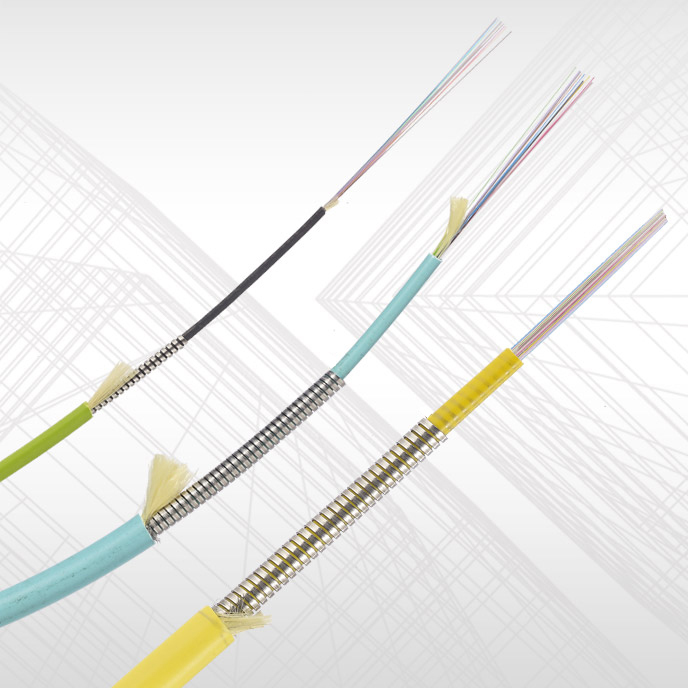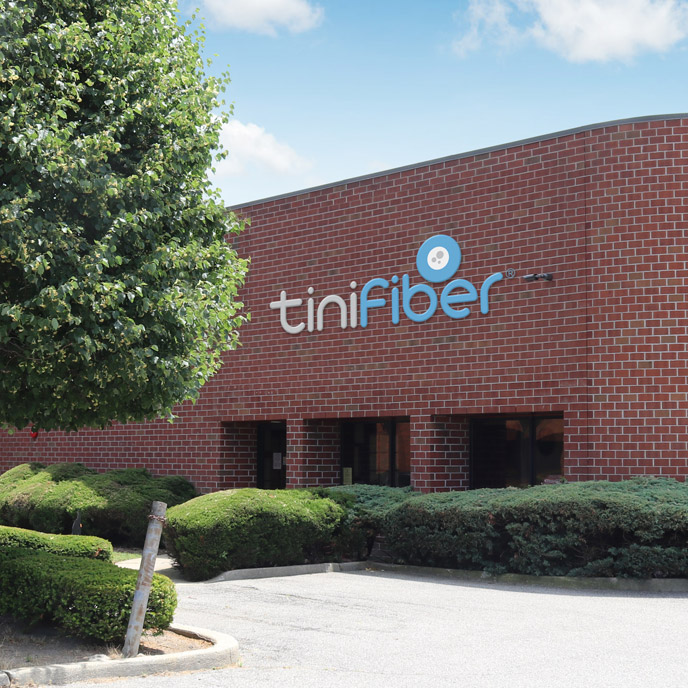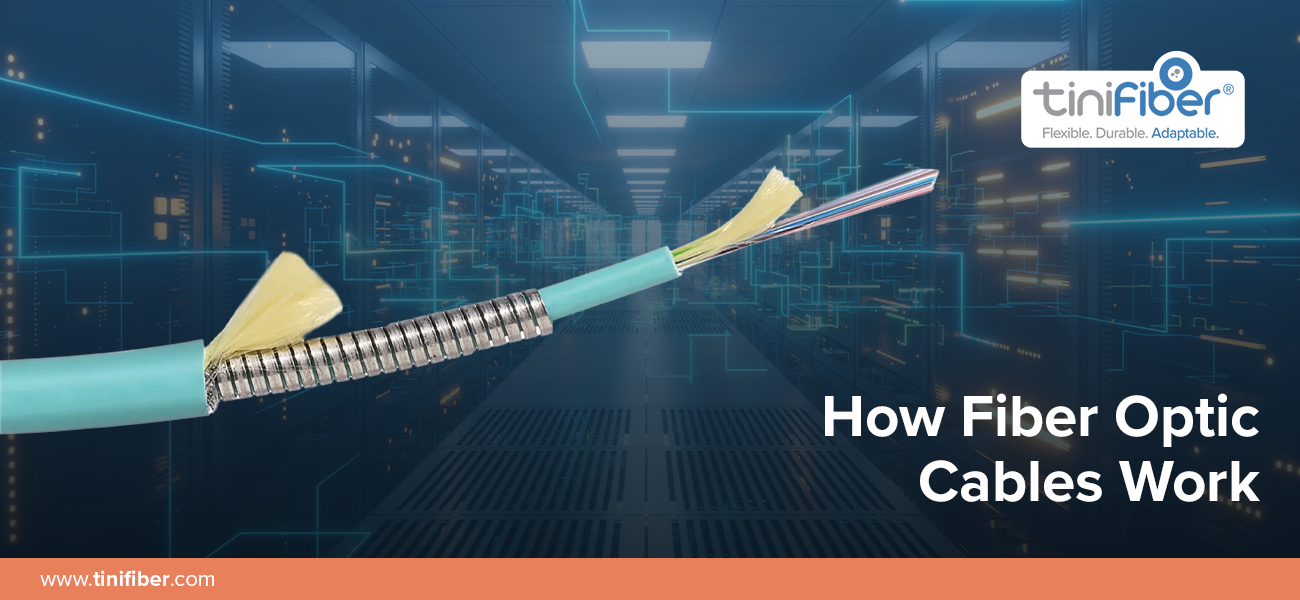Did you know that with fiber optic cables, you can download a full movie in less than 40 seconds?
Optical fiber technology is the future of data transmission. It allows us to communicate with the other side of the world almost instantly. But you may be wondering how this impressive technology even works.
We’ll give you a hint: it uses pure glass to transmit information. And with that pure glass, information can travel at the speed limit of the universe.
Join us as we discuss how fiber optics work. Then learn how modern implementations such as the armored fiber optic cable can help your business.
How Do Fiber Optic Cables Work?
As the name implies, a fiber optic cable is made up of fibers of pure glass. This lack of impurities in the glass makes the medium ideal for its light transmission capabilities.
When you shine a light into optical fibers, the light travels down the cable and out the other end. It doesn’t matter how long the cable is, either. You could have a cable that wrapped around the world, and the light would still reach the other end.
By variating the frequency of this light, scientists learned to send information. And since light is the fastest-moving element in the universe, we can send information just as fast. That’s right; fiber optics allow us to transmit information at the speed of light.
The Benefits of Fiber Optics
Prior to fiber optics, we transmitted information by electricity over copper. While electricity also travels at the speed of light, it has one major drawback: the metal provides resistance.
Resistance means that information requires a lot more energy to travel the same distance. It’s because of this that most internet companies won’t run long-distance coaxial cables. It takes a lot of electricity, and the cable resistance means the signal gets slowed and distorted.
Fiber optics, however, require no extra electricity to run. Once the light shines down the cable, it will reach the other end with no auxiliary power.
There are no distance limitations on optical fibers. It’s for this reason that the internet cables that connect our continents are all fiber optic. You can run a cable from here to China, and it will arrive at the same bitrate.
Further, fiber optics can transmit a lot more information. In fact, they can transmit more information than we can send. Another reason we use fiber optic cables between continents is because they can handle the bandwidth of an entire continent.
Disadvantages of Fiber Optic Cables
With so many advantages, it’s hard to see why we’d ever use copper again. But there is one significant disadvantage to optical fibers: they’re fragile.
Fiber optic cables use pure glass inside the wires. While this isn’t the same glass as your mirror, it is fragile nonetheless. Bending or kinking a fiber optic cable can be enough to break it.
But there is a solution to this: armored fiber optic cables.
How Armored Fiber Optic Cables Protect The Fiber Glass
Your supplier of fiber optic cable may provide an armored variant. This is a heavy-duty armored fiber optic cable that can withstand more than a regular unprotected fiber optic cable. It can handle the elements and months outdoors without showing signs of wear.
However, not all armored fiber optic cables are made equal. Some armored fiber cable, like the aluminum interlock armor (also known as AIA fiber optic cable) does a much less efficient job.
This Aluminum based armored fiber cable uses a thick and heavy protection that is extremely labor intensive to handle.
Most of the armored fiber cable suppliers offer this kind.
Tinifiber, on the other hand, uses their own patented and innovative type of armored fiber cable: Stainless Steel Micro Armor Fiber Optic Cable.
How the Micro Armor Fiber Optic Cable Perfects the Armored Design
First, this stainless steel micro armor fiber optic cable provides all the same protection that the industry standard AIA Fiber Optic Cable offers, and then more. It’s waterproof, element-proof, shock-proof, and most importantly… crush-proof. You can bury it underground, and it won’t crush easily as a result of passing humans or vehicles.
It’s resistant to vermin and uses shielding to avoid electrical interference. It is extremely flexible, durable, and adaptable to any setting, ensuring your cable avoids costly replacements in the future.
Second, the stainless steel micro armor cable has a smaller profile. It uses a fraction of the materials that the AIA uses without sacrificing any strength and durability. That translates to cost savings in materials that the manufacturer can pass on to you.
In addition to that, the small profile means it’s easier to install. You can fit this cable in places the AIA would be too big for. It puts less strain on cable fixtures and leaves room in the ducts for other cables. To put it into perspective, Micro Armor is 75% lighter and 65% smaller than industry standard AIA Fiber Optic Cables.
The micro armor cable has all the benefits of the AIA, minus all the glaring downsides. It’s the superior cable when it comes to any heavy-duty application. And it comes from a company that specializes in the manufacturing and handling of fiber optics cables.
Purchase the Micro Armor Cable Today
Fiber optic cables are a marvel of modern human engineering. They use pure glass to transmit data over long distances with minimal power consumption, fast speeds, and impressive bandwidth. However, they are more prone to damage.
The armored fiber optic cable provides a solution to this. AIA cables are a less-than-ideal solution since they’re heavy and far too large. Micro armor cables, on the other hand, provide better protection in a smaller package.
Looking to experience the magic of micro armor cable for yourself? Request a quote from Tinifiber and see the difference it can make.













